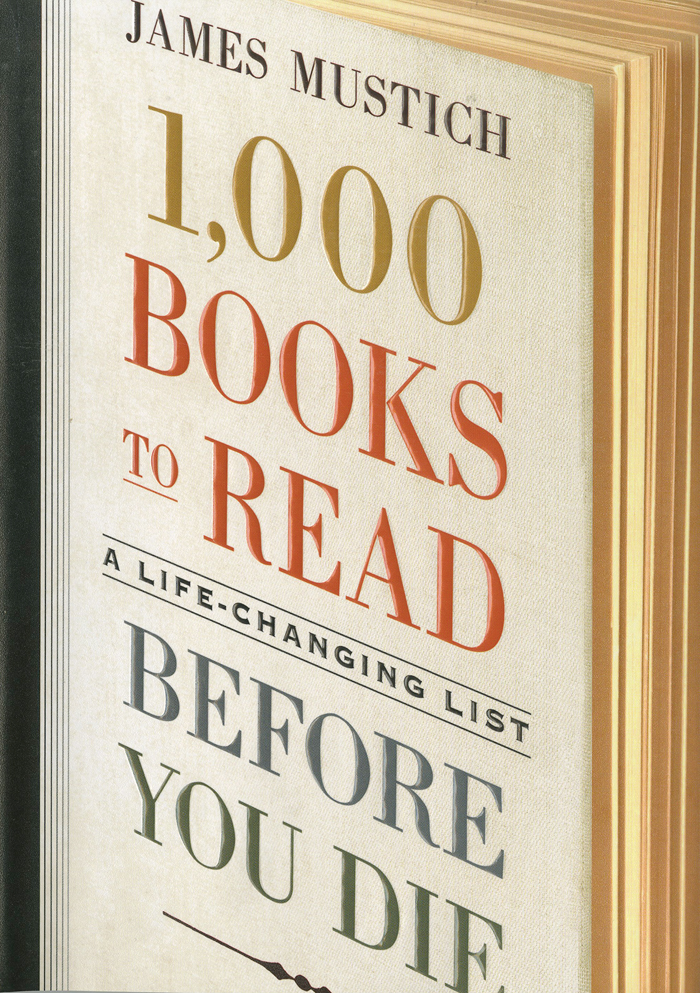1,000 great essays to keep you reading on and on
Published 12:00 am Sunday, November 18, 2018
“1,000 Books to Read Before You Die: a Life-Changing List,” by James Mustich. Workman Publishing. 2018. 949 pp. $35.
Now this is the kind of book I really like — an impossible encyclopedia of book titles, essays, lists, indices (don’t get to use that word much). An organized hodge-podge of opinion that is perfect for jumping into and out of in those moments between books, or when wondering what to read next or what to buy for my fellow bookworms.
The author, James Mustich, is a bookseller, and for 20 years produced the absolutely wonderful book catalog, “A Common Reader.” That catalog was always a welcome sight. It meant days of reading, with incredibly personal, revealing descriptions of books, reviews by readers, enticing illustrations. It was the ultimate catalog for a book lover and is sorely missed.
So it’s nice to have Mustich back with this gigantic collection of what could have been items in his catalog.
If you are wondering what to get the book lover on your list, this weighty (as in heavy to lift) tome with a significant price, $35, is the thing.
When it first arrived in the office for review, several of my bookish coworkers glanced at it, marveled at its weight and sort of laughed about it, but inside its pages readers will find many delights.
Mustich will recommend classics, children’s books, fiction, non-fiction, just about any genre imaginable.
You don’t have to like all the books in this volume, but think of the things you can learn. Your to-be-read list will grow exponentially. Or, if you are like some of us, just reading about the books will be satisfaction enough, for now.
As Mustich writes in his introduction, “Once people know you are writing a book called ‘1,000 Books to Read Before You Die,’ you can never enjoy a dinner party quite the way you did before.”
Armed with your big book, you can wow friends and acquaintances with newfound knowledge; you can start discussions, friendly arguments and debates.
Say you’re sitting at home on a cold rainy afternoon or evening. You’re too tired to pick up your book and make sense of the next chapter, but there’s that big book of books. Just a couple of those essays should do the trick. Say your significant other is watching something dumb on TV — stick your finger anywhere in “1,000 Books to Read” and see what you find.
Blurt out, “Listen to this one!” and read it to whoever will listen.
Mustich considered many, many ways to organize the book, by genre, by when it was written, until he settled on a simple, yet eclectic choice — alphabetical by author. This way, Samuel Beckett’s “Waiting for Godot” appears just after Ilene Beckerman’s “Love, Loss and What I Wore.”
For books with no listed author, he stuck them in alphabetically by title, so “Beowulf” is just a few pages from Beckett.
If the essays are not enough, be sure to read Mustich’s endnotes, which tell the genre of the book, when it was published or published in English, the different editions, awards the work may have won and, this juicy tidbit, “Also by:” other works by the same author.
Chimamanda Ngozi Adichie’s book “Americanah” was on the Great American Read top 100 list, but Mustich writes about “Half of a Yellow Sun,” an earlier novel.
Here’s another interesting juxtaposition: Poems by Emily Dickenson faces “The Year of Magical Thinking” by Joan Didion.
Here’s some of what Mustich says about Dickinson: “ … the enigmas of her imagery and expression sound notes with a bell-like beauty and precision; … she writes with an oracular confidence that echoes with deep resonance despite the fact that her exact meaning is hard to parse (in this quality, her most unexpected descendant in the family tree of American poetry may be Bob Dylan).”
To follow that with Didion’s memoir of her husband’s death is strangely fitting, and Mustich writes “Coming to terms with death, Didion shows us, means coming to the only terms it allows, which are the same as life’s but lonelier;’ We tell ourselves stories in order to live.’ “
Mustich says the book “seems — paradoxically — a necessary, life-enhancing miracle, and a boon to those whose grief is boundless.”
Oh the entries are endlessly fascinating in where they fall. Another example — “The Cyberiad: Fables for the Cybernetic Age,” by Stanislaw Lem is on the page opposite “A Wrinkle in time,” by Madeline L’Engle. And “Dreams from My Father” by Barack Obama is opposite “Master and Commander” by Parick O’Brian.
And throughout are color photos, photos of authors and book covers, historical photos, illustrations from books, paintings, renderings, anatomical illustrations.
Mustich draws you in in many ways, encouraging you to turn pages and wander through the titles.
You must have this as a hardback book, because it’s going to be used for a long, long time.




